 It’s that time again, a new version of OS X has been released! For those that aren’t aware of OS X, it’s Apple’s operating system. As usual, OS 10.4 is named after a cat: 10.2 was named Jaguar, 10.3 Panther, and the new 10.4 has been titled Tiger.
It’s that time again, a new version of OS X has been released! For those that aren’t aware of OS X, it’s Apple’s operating system. As usual, OS 10.4 is named after a cat: 10.2 was named Jaguar, 10.3 Panther, and the new 10.4 has been titled Tiger.
OS X has been touted by some as uncrashable, and that is how I’ve found it too: After setting it up, I haven’t once restarted my computer despite having installed over 30 applications since. This stability is what makes Apple have such a following of fans, and would be unheard of on a Windows box.
There’s lots of new goodies in Tiger, but in this article I’ll focus on the addition of a search technology called Spotlight, which makes searching through files instantaneous. It also allows the creation of so-called search folders, with links to every file which matches that folder’s search criteria, which I detail lower down.
The clever bit, is that these search folders are self-updating, meaning that as soon as you start writing a document containing the word “banana”, the search folder that is told to look for this word, will find it and create a shortcut to it along with all the other files that contain the word.
This is the spotlight icon in the menubar

Click it.

And type what it is that you are looking for. In my case, I typed ‘Summer’.
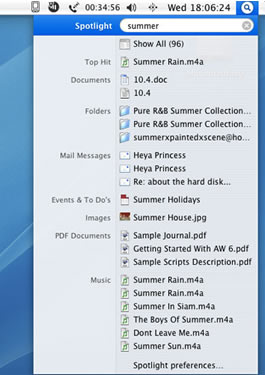
Within about one and a half seconds, the above menu appears. Clicking the top icon (Show All), shows a traditional window of all the results for the search. The second icon, labelled Top Hit, is the file that Mac OS X thinks is the most relevant to the search criteria.
The next section of search results lists folders with the word ‘Summer’ in their names. Pretty self-explanatory really.
Then email messages with the word ‘Summer’ in them are listed. The ability to index pretty much anything and then make it searchable is what’s so special about Spotlight.
The following one has items that Spotlight drew up from the calendar application I use.
Images, self-explanatory too.
PDF Documents are listed in the next section. Not many other search applications can index PDF files, but thanks to the tight integration of PDF with Mac OS X it is easily possible.
The last section contains music with the word ‘Summer’ in. Although not apparent here, Spotlight even searches the tags of MP3 and AAC files for words, meaning that if a song file was called, say, Winter but the artist in the tag of the file said ‘Summer’, it would still show up in the list of results.
Searchable folders, or “Smart” folders as Apple likes to call them, work similarly, but they are more use for things you often need to access and don’t want to keep typing into spotlight to find.
Click on the “file” option in the finder and then click on New Smart Folder.
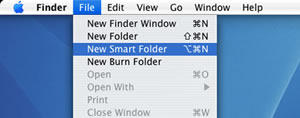
A window appears.
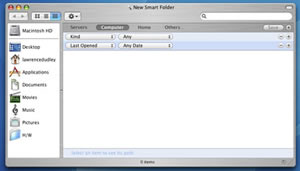
I typed “Summer” in the top right box as before. This instantly showed all the related files:
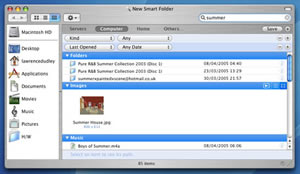
Next you just have to click on the red circle, the equivalent of the close window button in Windows. Finder asks you where you want to save the smart folder just created. I told it to just save it to the desktop as “Summer”:

Hit Save and the newly created smart folder appears on the desktop:
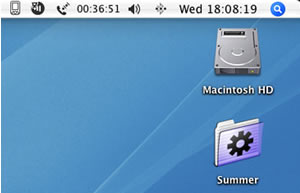
Summary
Apple are carrying out a pincher movement. Bit by bit, Apple are both removing reasons for Windows users not to switch to Mac, while adding tempting reasons to convert. This latest offering of OS X, in conjunction with less viruses on a Mac, and access to a powerful collection of digital media software (iPhoto, iTunes, GarageBand, iMovie, iDVD) should encourage Windows users to want an Apple computer. Let’s not forget that the next significant version of Windows, Longhorn, and its promised security and anti-virus features, are still likely to be more than a year away,
Overall, there are many more new features in Tiger, over 200 according to Apple. Having made the change from Windows myself, my suggestion is to spend some time with a Mac and experience it for yourself. You too might make the change.
For those wanting to buy a brand new Apple Mac, they can be purchased from Amazon (US|UK), and if you are a student or are otherwise involved in education, you can get a juicy education discount from Apple, so there’s really no excuse anymore!
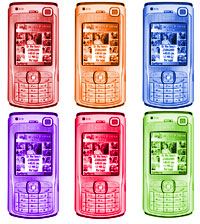 Cell phone penetration in Western Europe will hit 100% by 2007 as mobile-loving customers continue to scoop up multiple phones and phone cards.
Cell phone penetration in Western Europe will hit 100% by 2007 as mobile-loving customers continue to scoop up multiple phones and phone cards.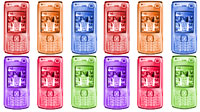 Although some people might think that the rise is fuelled by drug dealers toting multiple phones for ‘business’, the increase is actually explained by customers buying multiple phones and/or SIM cards.
Although some people might think that the rise is fuelled by drug dealers toting multiple phones for ‘business’, the increase is actually explained by customers buying multiple phones and/or SIM cards. With a manly backslap, Intel and Sprint have announced that they will work together to advance development of the 802.16e WiMAX standard.
With a manly backslap, Intel and Sprint have announced that they will work together to advance development of the 802.16e WiMAX standard.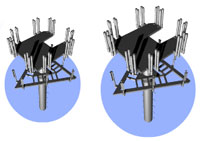 In case that sounded too simple, here’s Oliver Valente, CTO and VP of technology development for Sprint, to baffle you with a buzzword remix: “Our relationship with Intel will help validate requirements, drive key ecosystem development needs, formulate network strategies and define the potential for advanced wireless services adoption”.
In case that sounded too simple, here’s Oliver Valente, CTO and VP of technology development for Sprint, to baffle you with a buzzword remix: “Our relationship with Intel will help validate requirements, drive key ecosystem development needs, formulate network strategies and define the potential for advanced wireless services adoption”. Sean Maloney, another executive with an impossibly long job description (“executive vice president and general manager of the Intel Mobility Group”) added: “WiMAX technology has the promise to deliver new broadband services to consumers globally.”
Sean Maloney, another executive with an impossibly long job description (“executive vice president and general manager of the Intel Mobility Group”) added: “WiMAX technology has the promise to deliver new broadband services to consumers globally.” Today, the US Court of Appeals for the DC Circuit ruled that the US FCC (Federal Communications Commission) does not have authority to prohibit companies from making computer and video hardware that doesn’t comply with the Broadcast Flag. This was to come into effect on 1 July, this year.
Today, the US Court of Appeals for the DC Circuit ruled that the US FCC (Federal Communications Commission) does not have authority to prohibit companies from making computer and video hardware that doesn’t comply with the Broadcast Flag. This was to come into effect on 1 July, this year. We equated it to either a door being slammed, or it being politely pushed closed, but left ajar. It appear as if it’s the big slam.
We equated it to either a door being slammed, or it being politely pushed closed, but left ajar. It appear as if it’s the big slam. Yahoo has pulled a fast one on its rivals by unexpectedly taking it’s
Yahoo has pulled a fast one on its rivals by unexpectedly taking it’s  Finding video content on Yahoo’s new search facility is easy enough: type in the relevant keywords and you’ll be taken to a results page showing thumbnails of the video files. Clicking on the thumbnail takes you to the hosting page with an option to directly view the video.
Finding video content on Yahoo’s new search facility is easy enough: type in the relevant keywords and you’ll be taken to a results page showing thumbnails of the video files. Clicking on the thumbnail takes you to the hosting page with an option to directly view the video.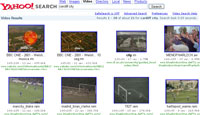 In the interests of research, we rummaged around for naughty porn, but couldn’t find anything too racy – until we spotted the ‘turn safe search off’ option. Clicking on this released a veritable cascade of filth that would send Mary Whitehouse’s graveyard residence spinning in turbo mode.
In the interests of research, we rummaged around for naughty porn, but couldn’t find anything too racy – until we spotted the ‘turn safe search off’ option. Clicking on this released a veritable cascade of filth that would send Mary Whitehouse’s graveyard residence spinning in turbo mode. UK third-generation mobile phone network 3, have teamed up with TV production and distribution company Granada to bring the popular ITV show, Celebrity Wrestling, to video mobiles for the first time.
UK third-generation mobile phone network 3, have teamed up with TV production and distribution company Granada to bring the popular ITV show, Celebrity Wrestling, to video mobiles for the first time. Gareth Jones, COO of 3 thinks the idea is a whoop-de-do winner: “TV shows like this are ideal for our ‘Today on 3’ service, we’re tapping into programmes that we know our customers really enjoy and we’re providing it to them in bite-size chunks on 3.”
Gareth Jones, COO of 3 thinks the idea is a whoop-de-do winner: “TV shows like this are ideal for our ‘Today on 3’ service, we’re tapping into programmes that we know our customers really enjoy and we’re providing it to them in bite-size chunks on 3.”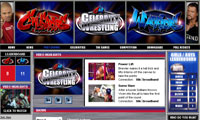 Lord knows who would want to fork out for this dreadful tack, but Granada will be supplying around sixty video clips to 3 customers over the course of the eight week series, with the clips charged at 50p each (or included within add-on packages).
Lord knows who would want to fork out for this dreadful tack, but Granada will be supplying around sixty video clips to 3 customers over the course of the eight week series, with the clips charged at 50p each (or included within add-on packages). T-Mobile is offering a free WiFi pilot service on Southern Rail’s busy London-to-Brighton train service in readiness for a full launch in June.
T-Mobile is offering a free WiFi pilot service on Southern Rail’s busy London-to-Brighton train service in readiness for a full launch in June. T-Mobile manager for WiFi Jay Saw was in full corporate PR spin mode as he enthused: “We are the only operator that has placed GPRS, 3G and WiFi at the centre of its strategy. That differentiates us from the competition. We’re the world’s largest network – by our own definition.”
T-Mobile manager for WiFi Jay Saw was in full corporate PR spin mode as he enthused: “We are the only operator that has placed GPRS, 3G and WiFi at the centre of its strategy. That differentiates us from the competition. We’re the world’s largest network – by our own definition.” Purring like a cat recumbing in cream, Apple CFO Peter Oppenheimer revealed that Apple’s iPod shuffle has snaffled a 58 per cent share of the flash-based digital media market in the US.
Purring like a cat recumbing in cream, Apple CFO Peter Oppenheimer revealed that Apple’s iPod shuffle has snaffled a 58 per cent share of the flash-based digital media market in the US.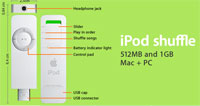 Positively glowing with confidence, Oppenheimer claimed that MP3 capability in handsets will be more complementary than a replacement, with handsets suffering from “a worse user interface and limited battery life,”
Positively glowing with confidence, Oppenheimer claimed that MP3 capability in handsets will be more complementary than a replacement, with handsets suffering from “a worse user interface and limited battery life,”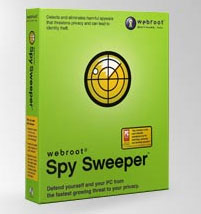 Anti-spyware firm Webroot have produced a survey which claims that spyware – invasive programs that generate pop-ups, hijack home pages and redirect searches – generate an estimated US$2bn (~£1.05bn~€1.54bn) in revenue a year.
Anti-spyware firm Webroot have produced a survey which claims that spyware – invasive programs that generate pop-ups, hijack home pages and redirect searches – generate an estimated US$2bn (~£1.05bn~€1.54bn) in revenue a year.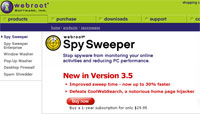 “Our previous Quarterly SpyAudit Reports have provided a numerical analysis of spyware’s growth, but our industry has been lacking a comprehensive resource that fully documents the spyware threat. The State of Spyware Report fills that void and delivers the most in-depth, expansive review and analysis of spyware to date.”
“Our previous Quarterly SpyAudit Reports have provided a numerical analysis of spyware’s growth, but our industry has been lacking a comprehensive resource that fully documents the spyware threat. The State of Spyware Report fills that void and delivers the most in-depth, expansive review and analysis of spyware to date.” According to a survey carried out over the Easter period by network management company, Ipswitch, a thumping
According to a survey carried out over the Easter period by network management company, Ipswitch, a thumping